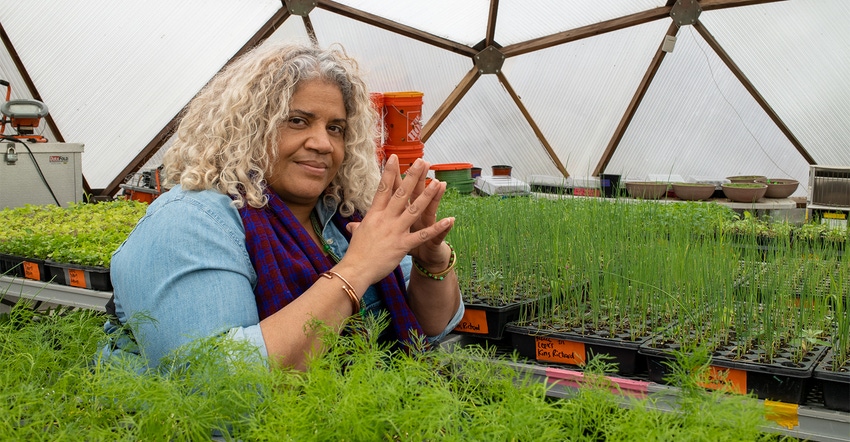A south Chicago brownfield unfit for use for nearly a century is being transformed into a renewable energy facility and urban agriculture campus. The project is co-led by two nonprofits: developer Green Era and farm owner Urban Growers Collective.

A south Chicago brownfield unfit for use for nearly a century is being transformed into a renewable energy facility and urban agriculture campus. The project, co-led by two nonprofits: developer Green Era and farm owner Urban Growers Collective, will feature nine acres to house an anaerobic digester (AD) to process food waste, a depackaging operation, community education center, farm, and high-tech greenhouse, among amenities.
The initiative was originally conceived to grow more food, as well as to upgrade soil health via composting, in low-income and minority neighborhoods. It will have a heavy teaching component, prioritizing community education around the food system and food waste and showing opportunities that come from focusing on improving methods in both these areas.
“We want to demonstrate tangibly what the new green economy really means. And what it means [in this case] is creating new jobs, renewable energy, and food; and diverting organics from landfill in an urban area that has been undeserved,” says Jason Feldman, co-founder, Green Era Sustainability.
While still under development, the Green Era Campus has already welcomed hundreds of curious visitors from the community and beyond, most recently receiving visiting students from as far as France and a Canadian company interested in sustainable development.
Once the multi-faceted set-up is fully operational, people will be able to get a glimpse of the whole process in one place, beginning with an upstream snapshot of how food is grown. Downstream, they will observe on-campus operations from receipt of food scraps to generation of the final products: RNG and a finished compost. The project’s facilitators are especially interested in engaging kids and are working with local schools on programming to explain these operations and why they matter.
“What’s exciting is that this will be tangible. Students will actually see how [the system] works, so they can understand and be the changemaker,” Feldman says.
Food scraps, which will come largely from food manufacturers, distributors, and haulers, will be separated from packaging and made into a pumpable slurry. The slurry will be fed to the digester to produce biogas; then cleaned to pipeline quality renewable natural gas (RNG) to be injected into the grid. Digestate that comes out of the back end of the process will be made into a compost that meets finished compost standards, for use on the farm and also sold to the community.
The operation should be able to process about 85,000 tons of feedstock a year. It aims to produce enough renewable natural gas for pipeline injection to replace over 1 million gallons of gasoline per year. Or the equivalent energy to power more than 1,000 Illinois homes per year. And it should generate about 30 cubic yards of compost a day.
Also planned is a community education center with classrooms, a commercial teaching kitchen, meeting spaces, and food and nursery retail space.
The Green Era campus is also expected to house a greenhouse for controlled-environment growing year round, outdoor ecological areas with features such as an edible forest, walking trail, and open-air amphitheater.
Community input has been integral to the work to bring the initiative to life.
“We would not have a project without community involvement and support,” says Erika Allen, co-CEO Urban Growers Collective and president, Green Era Sustainability.
“We held dozens of meetings and visioning sessions with residents and with our partner Greater Auburn-Gresham Development Corporation, another 501(c) (3) who recently opened a full-service health hub,” she says.
Urban Growers Collective worked with Chicago area schools to design the community education center, retail food, and agriculture and green space facets of the campus.
“Their designs reflect what the students and our team visioned,” Allen says.
Among the youths’ innovative suggestions is a walking path and floating deck that expands the usable space, and a sculpture of a food pyramid that would be a play feature for visiting children.
“They were excited to vision this together, and we look forward to seeing it realized as the capstone for their contributions and legacy of creativity that will continue to deepen as we open our doors,” Allen says.
Green Era plans to work with schools in other ways, for instance to provide Science, Technology, Engineering, and Math (STEM) curricula and teach students the importance of environmentally conscious urban farming, vermicomposting, urban gardening planning, and seeding.
The education and outreach will be ongoing, with a focus on improving food waste recovery at the household level.
“As youth lead food waste diversion in school, visit the campus to see where that waste goes and how it is used to make compost to grow more food in the school garden, they become motivated. They begin to understand why diversion is important and the value of these resources in growing more food. And they see economic opportunities,” Allen says.
The first phase of the project is the opening of the anaerobic digester, projected for January 2023. Preparation is underway to roll out a capital campaign to raise funds to build the community education center, hoped to launch in 2024. So far $30M has been raised according to Feldman.
About the Author(s)
You May Also Like




